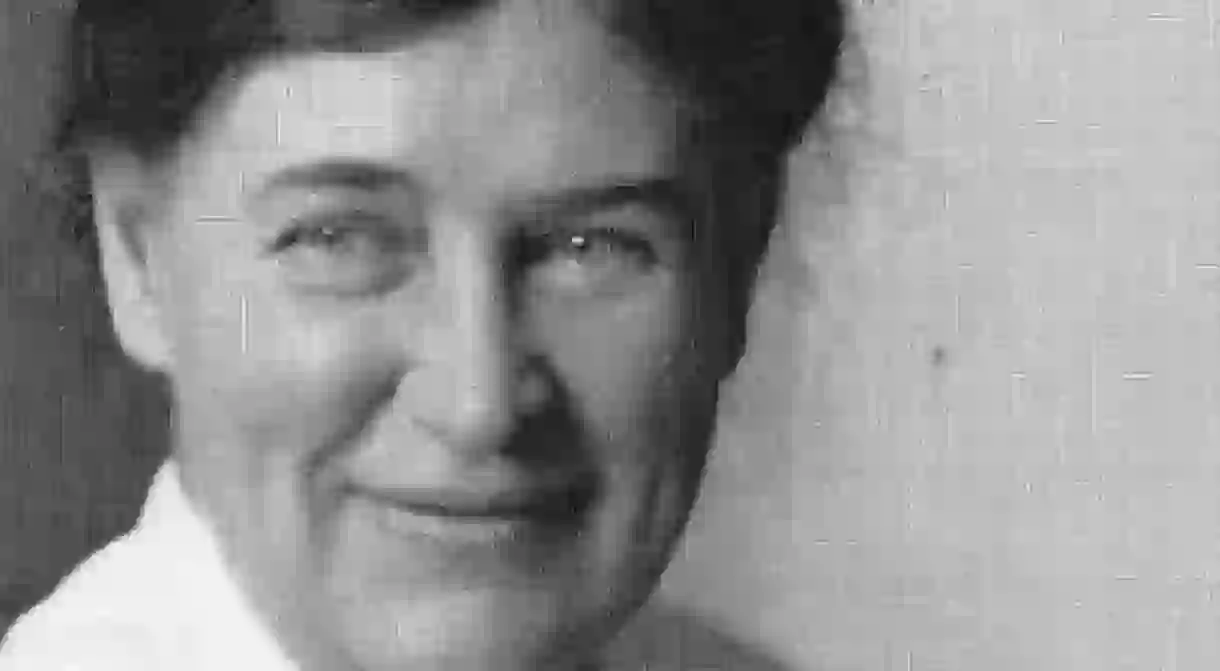An Introduction To Willa Cather, The Novelist of the American Pioneer

Lindsay Parnell explores the work of Willa Cather, an icon of American Literature whose novels would define the culture and profile of the Midwestern United States, in particularly her home state of Nebraska.

Though born in Virginia’s Shenanadoah Valley in 1973, it is the raw aesthetics of the Midwestern landscape that would greatly influence Willa Cather’s celebrated works. After a move from Virginia to Nebraska when she was 10, Cather became involved in drama, music and classical studies, but it was European Literature that Cather turned to. Cather found herself creatively inspired by European philosophy, history and cultures which were much unlike her own. Living amongst immigrant settlers along the Great Divide provided Cather with the raw inspiration that she would call upon in her celebrated novels of tales of frontiersmen and women in the desolate Midwest.
From 1888-1893 Cather lived as a male, calling herself ‘William Cather, MD’ and ‘William Cather Jr.’ in a denunciation of what she believed to be the typical constraints of Victorian ideals of female identity. Gender performance would become a staple within her work. While her work is typically associated with ideas of cultural identity, immigration, and the development of civilizations, Cather’s gender subtext within her fiction provides a fascinating commentary on sexuality within the United States at the turn of the century. Following her education at Lincoln Prep Latin School, Cather attended the University of Nebraska. Her first short story, ‘Peter’, was published in Boston Magazine and was followed by a stint as an editor of a women’s magazine. A decade was then spent living and work as a literary professional on the east coast in Pittsburgh, Pennsylvania. But it is Cather’s impressive resume of novels including her famous Prairie Trilogy that solidified her presence in America’s literary Canon.
Published in quick succession between 1913 and 1918, Cather’s Prairie Trilogy experienced both critical and mainstream success. Cather’s novels were praised for a use of the then ‘casual’ American vernacular that told the story of regular American people of the frontiersmen era. The trilogy’s opening novel, O Pioneers!, was published in 1913. O Pioneers! tells the story of the Bergson family, a group of immigrants living in a fictional Nebraska town. It chronicles the life and times of Alexandra Bergson in the wake of her father’s death, when she must dedicate her life to sustaining the family farm in times of economic hardship. Alexandra struggles to support her family and the land her father has left. Her story features her own coming of age in her growing attraction to Carl Linstrum and explores notions typical of life in the Midwest, most notably, the idea of isolation.
The Song of the Lark would quickly follow its predecessor with publication in 1915. The second installment of Cather’s Prairie Trilogy tells the story of the artistically gifted Thea Kronborg in the fictitious Colorado town of Moonstone at the turn of the 20th century. Thea’s narrative begins with her departure of her family home in an ambitious pursuit of big city dreams, becoming a classically trained pianist. The novel explores Thea’s professional and personal struggles as she is driven desperately by her musical aspirations. Thea’s cross-country journey chronicles not only her professional journey, but an emotional one in her discovery of own her true gift, her voice.

The Prairie Trilogy’s arguably most famous episode and closing chapter was published in 1918. My Antonia received an overwhelmingly positive critical reception and remains Cather’s most loved work today. The novel opens with Jim Burden’s arrival in Black Hawk, Nebraska. Following his parents death he moves to the fictional town of the Great Divide to live with his aging grandparents. Jim quickly becomes infatuated with the beautiful Antonia, and their stories are tied together, knotted and unravel throughout Cather’s epic text. Cather’s use of tightly structured vignettes within the over-arching novel allow the reader to thoroughly explore Jim and Antonia’s characters, even though Jim is the text’s first person narrator. The vignettes encompass Jim’s life in its entirety from his move to Black Hawk into his adulthood, as well as dually telling Antonia’s story. The vignette narrative sketches of Jim’s time spent with Antonia (featuring the use of sexualized language to emulate the awakening of the text’s female characters, Antonia and Lena), Jim’s time spent at university and his budding relationship with Lena Lingard, and the corresponding fates of Jim and Antonia in their adulthood.
Following the release of her Prairie Trilogy, Willa Cather was awarded a Pulitzer Prize for Literature in 1923 for One of Ours, a novel of domestic turmoil and the sometimes convoluted infection of family inheritance. But it is Cather’s Prairie Trilogy that remains a true accomplishment in regional literature. Much like William Faulkner and Flannery O’Connor’s for the American South, Cather’s fiction of the Midwest still today embodies the fundamental beliefs in exploration and discovery and the commensurate pathos of isolation and loneliness.
By Lindsay Parnell













